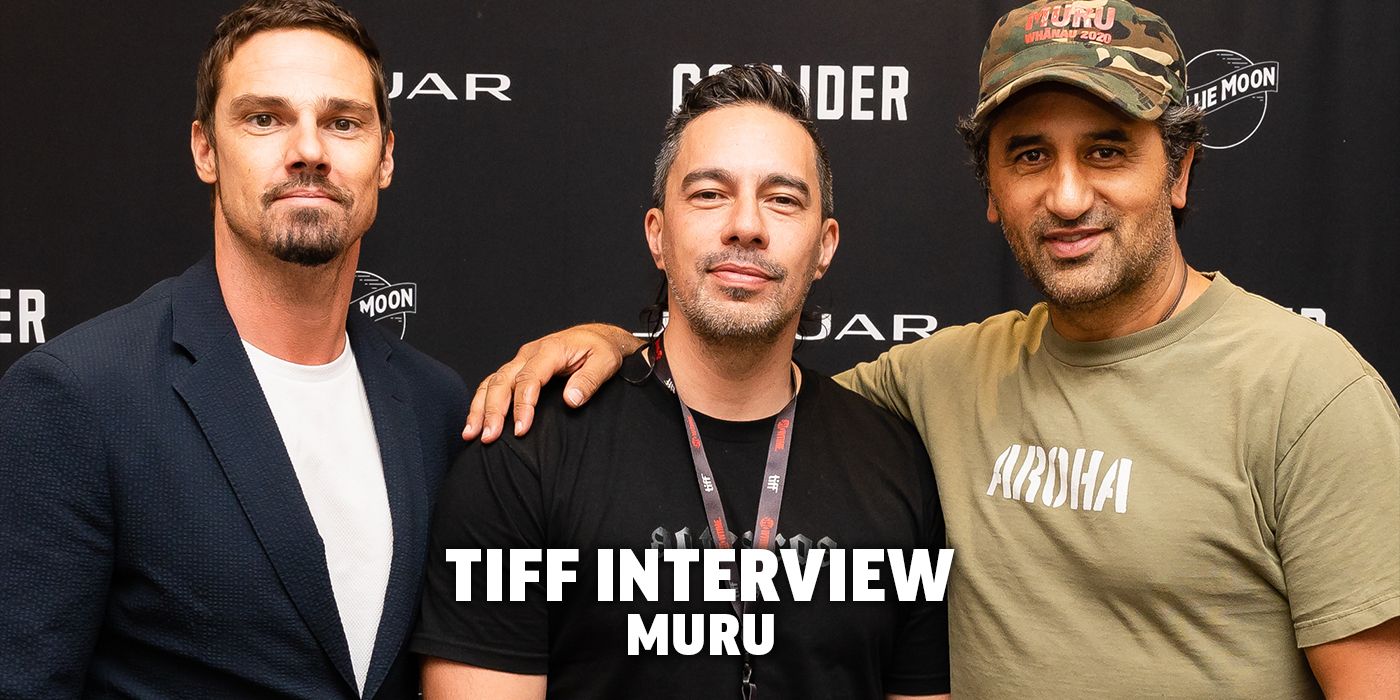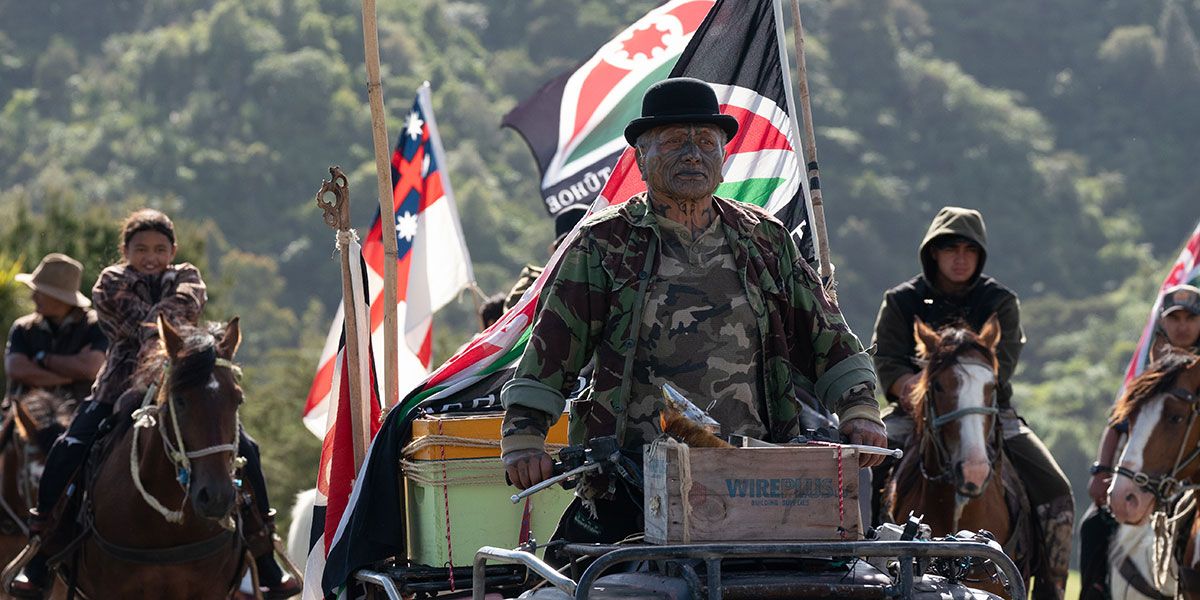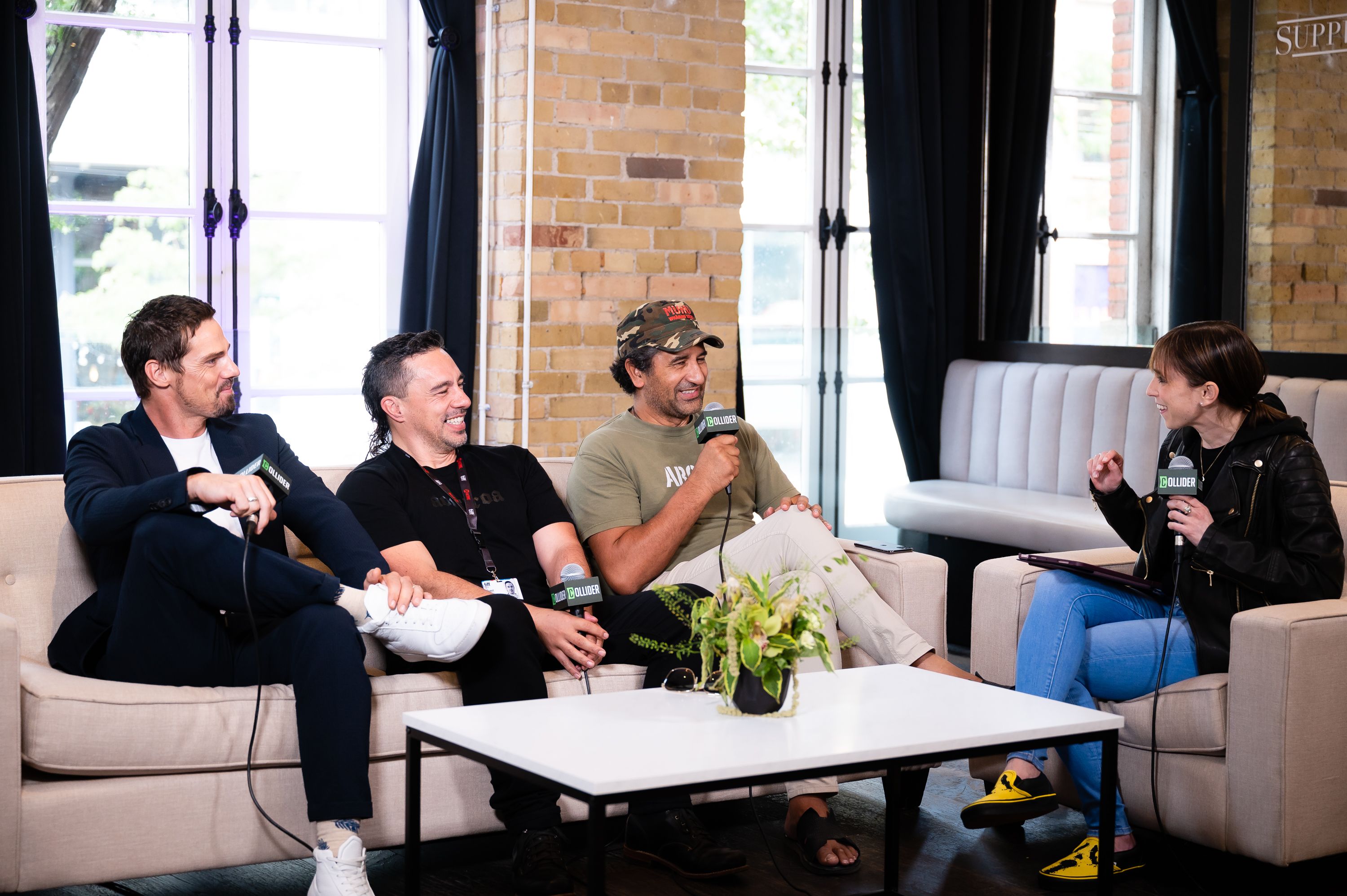If you’re unfamiliar with the history of Tūhoe, I’d highly recommend carving out a significant amount of time after seeing Muru. The film does manage to accomplish quite a bit in its 104-minute running time, but as a profound action film addressing 100 years worth of history, it’s bound to spark a need to learn and explore more.
Inspired by true events, Muru addresses the conflict between Indigenous communities and colonial police forces. Cliff Curtis leads as Taffy, a Māori police officer who’s forced to choose between his people and his badge when he becomes aware of an impending raid led by Jay Ryan’s Captain Gallagher. Tāme Iti, played by the real Tāme Iti, runs a series of boot camps in the region aimed at teaching survival skills and keeping the Tūhoe identity alive. Little do they know, these boot camps have been under surveillance for months so when a young resident fires a loaded rifle, Gallagher’s Special Tactics Group is brought in.
In honor of Muru’s world premiere at the 2022 Toronto International Film Festival, Ryan, Curtis, and director Tearepa Kahi all visited the Collider Supper Suite and Media Studio at Marbl to discuss the truth behind their movie and what it was like making a Hollywood-style action film on location in Te Urewera.
Kahi began by offering additional insight into the event that inspired the movie:
“The government enacted a raid against this community, and by raid we say they brought an STG, they treated it like a black ops operation in terms of, domestic terrorists live here. And that wasn't the case. So the inspiration behind creating the film and creating a response to the raid is actually about lifting the truth, de-masking power, seeing who these people truly were, seeing who this community and Iwi tribe truly are beyond the headlines that seem to snapshot us and encapsulate what happened on this one day.”
Kahi and Curtis had been developing Muru for some time before production began, so I opted to ask them for the biggest difference between how they originally envisioned this story playing out and what we see in the final film. Kahi jumped in:
“In terms of defining and drawing these characters and the arcs that they all travel, it was important for us to get way beyond the black and white headline into this gray area, into this human area, into this place of discovery for each of our characters who are on this chessboard. And it's a big chessboard because this is a deep, rich valley and community. In terms of the original draft, well, it was very faithful to a small snapshot and what we were able to do with a lot of direction from Tūhoe themselves, and each other, was create more context, give deeper understanding and really color and shade the full relationship.”
The cast didn’t even need to hit the set to feel the power of the screenplay Kahi crafted. The very first table read left them speechless. Ryan recalled:
“There was a great silence of what we had just read and experienced and heard amongst each other for the first time hearing it out loud come off the page. I remember when I read the script for the first time, I think two pages in I was in awe. I hadn't even read any dialogue or scene work yet. It was just sort of the statements up the front, and the statement was that this event happened in 2007, but it also happened 100 years before this and another 100 years before that, so this is an ongoing history between these people of Tūhoe and the crown. So for me, to learn that history within a couple of pages was quite shocking, and I felt the weight of what we're about to go in and do."
As though the experience of making Muru wasn’t remarkable enough, then Kahi cast the really Tāme Iti to play himself in the film. Ryan took a moment to discuss his own connection to the New Zealand Māori activist.
“Tāme is iconic in New Zealand, but many people have different opinions of why he's iconic. The 2007 raids, the media really painted a dirty picture of the man and the people surrounding him to fit their rhetoric, so for me, to be a part of this was to change that narrative. I was saying to T[earepa] the other day, my own father, when I told him I was gonna do a movie with Tāme Iti, he was like, ‘Isn’t that fellow like, you know? Isn't he guilty?’ And I was like, ‘No, dad, he’s not and that's why I'm doing the movie.' And so when he saw the film recently, he was like, ‘Oh, I get it. You know, I get it,’ so that's all I needed. That was that was my goal in this piece.”
Kahi further emphasized the great honor of getting to film with Iti and the Tūhoe people:
“Tūhoe [is] the home of Tāme Iti, and as the home of Tāme Iti, we were all so honored and privileged to be welcomed into his backyard. And we all, as Māori, owe so much to Tūhoe because of the conflict and the breakdown of relationships, their autonomy, their self independence, their language preservation, their Tikanga traditional preservation. Every other Iwian New Zealand Aotearoa aspires to be honorary Tūhoe.”
While Tikanga is customary to Māori, it's a practice any film set could benefit from embracing — or any person in general, for that matter. Curtis took a moment to explain what it means to practice Tikanga:
“It really comes down to respectfulness. If you walk into someone's house, if you walked in someone's front yard or backyard, into their world, whatever it is, it's about being respectful of who you are and whose environment you're walking into ... We all have our own homes, we all have our own ways of being, and it's really about being respectful, and about respecting what happens in your house when I'm in your house, respecting what happens in your house and what happens in your front or backyard and respecting you as a human being, really knowing your family or your community. To go in with a predetermined, predisposed idea of who you are and what you are disrespectfully, that's not Tikanga.”
Kahi also explained how pivotal Tikanga was to the making of Muru in particular:
“We shot this film in 29 days and we did not shoot this film on a film set. We shot this in their house, in their valley, and the only way that we could accomplish that ridiculous unattainable schedule is because of the support and respect that we had. Tikanga is about empowering the person, empowering the community, empowering the storytellers, empowering the participants.”
Looking for more from Kahi, Curtis, and Ryan? We’ve got just that for you in the video interview at the top of this article!
Special thanks to our TIFF 2022 partners A-list Communications, Belvedere Vodka, Marbl Toronto, COVERGIRL Canada, Tres Amici Wines, Toronto Star, and Blue Moon Belgian White beer.




